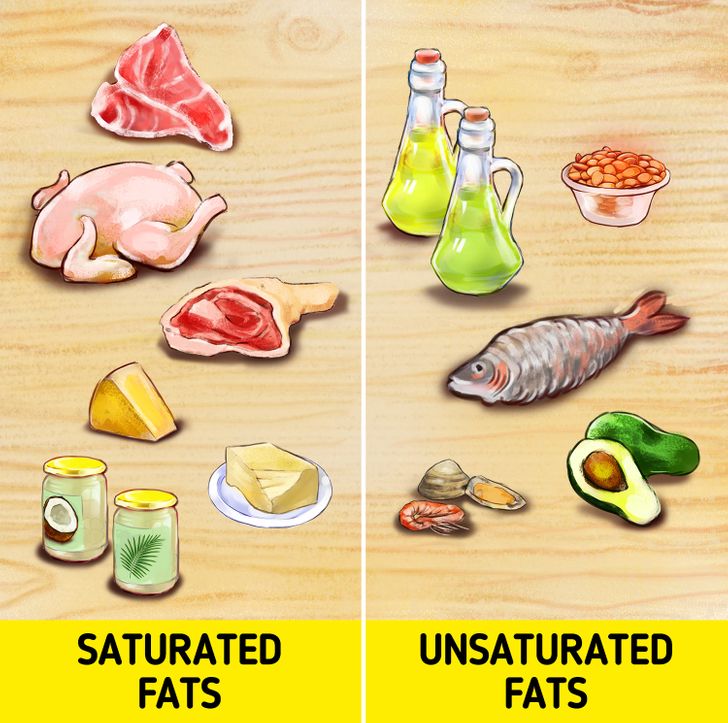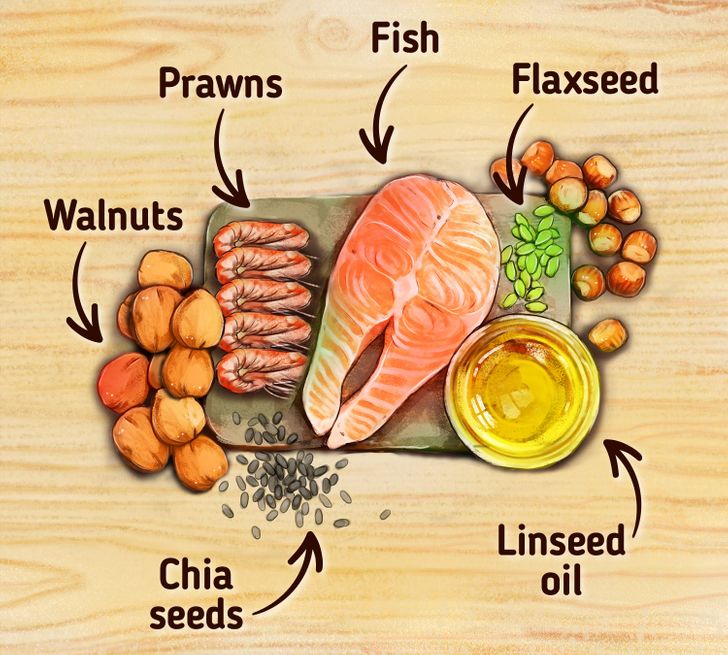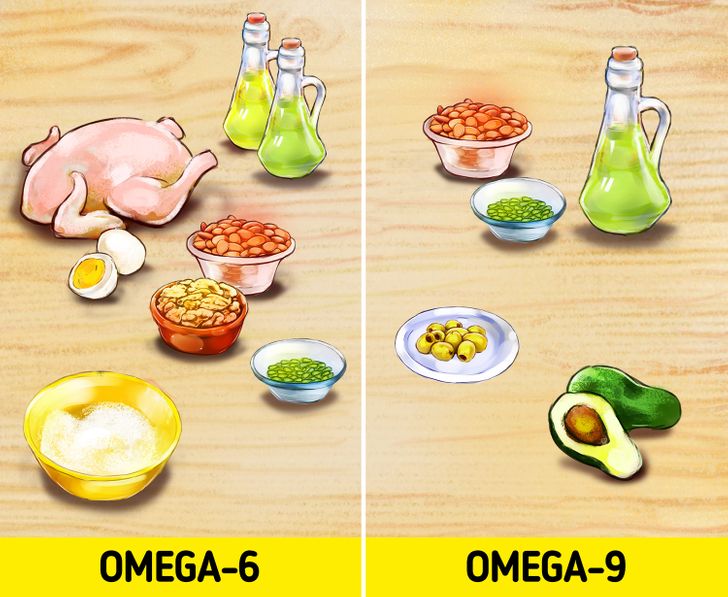What Omega-3 Acids Are All About, and Why Our Bodies Need Them

The term “fatty acid” might not seem very appetizing, but these nutritional elements are very important for our health. Our bodies cannot synthesize them on their own, that’s why omega-3s should come together with food.
5-Minute Crafts is telling you what omega-3 acids are all about, what benefits they bring to our health, and what foods contain them.
What omega-3 acids are all about

- Fats that come into your body with food can be saturated and unsaturated. The molecules of the former are composed of fatty acids, the chains of which have single carbon bonds. These fats are usually solid at room temperature. These include meat, poultry, cheese, butter, and some vegetable oils, such as coconut and palm oils.
- The molecules of unsaturated fats have double bonds of carbon that “discharge” fatty acids. Monounsaturated fats have one such connection, and polyunsaturated fats have 2 or more of them. Such fats have a liquid consistency at room temperature. These include vegetable oils, such as sunflower, corn, and olive. They are also found in fish, seafood, avocados, nuts, and seeds.
- Omega-3 is a family of fatty acids found in polyunsaturated fats. Apart from this, the omega-6 and omega-9 acid families exist as well. Their name reflects the peculiarity of the molecular structure of such substances, which is the location of the first double carbon bond. In omega-3, it is located at a distance of 3 carbon atoms from the end of the chain; in omega-6, from 6; and in omega-9, from 9.
- The omega-3 fatty acid family includes alpha-linolenic acid (ALA), eicosapentaenoic acid (EPA), and docosahexaenoic acid (DHA). ALA is found mainly in vegetable oils, while EPA and DHA are found in fish and seafood.
- Omega-3s are essential fatty acids. It means that our body cannot produce them, and we should get these substances along with food.
What benefits omega-3 acids have

Omega-3 acids are believed to help normalize blood triglyceride levels and lower blood pressure slightly. In addition, they are associated with a low risk of developing Alzheimer’s disease and other types of dementia. Also, omega-3s may prevent age-related macular degeneration, the leading cause of vision loss in the elderly.
The issue with the benefits that omega-3 acids give is that they don’t have convincing evidence. Existing research is contradicting and doesn’t give a clear answer to the question of whether they reduce the risk of certain diseases or not.
Omega-3 food supplements raise even more doubt. Some research shows that they don’t reduce the risk of heart disease, and the benefits of these substances are associated with a high consumption of seafood. For example, an assessment of 17 studies conducted in 2011 found that people who eat fish and seafood up to 4 times a week are less likely to die of heart disease. According to the US National Center for Complementary and Integrated Health, there may be 4 reasons for this:
- Seafood should contain enough omega-3s, no more than what the body really needs. While the excess of micronutrients may not have a significant health impact at all.
- In addition to omega-3 acids, other nutrients that seafood contains can have a positive effect on health.
- The positive effects of fish and shellfish can be a result of people eating them instead of junk food.
- There is evidence that people who eat seafood have a generally healthier lifestyle.
All in all, we can say that the generally known beneficial properties of omega-3s have not yet been proven and continue to be researched by scientists. It’s only the functions that fatty acids of this group perform in the body that are reliably known. In other words, they are important components of cell membranes and provide the body with energy due to their high-calorie content.
Where to find omega-3 acids

Omega-3 acids are often found in dietary supplements, but as we discussed above, their benefits are questionable. The best option would be to consume fatty acids in seafood. For example, the US Department of Health and Human Services recommends that adults eat 225 g of different fish and shellfish per week. This will saturate your diet with all the nutrients that seafood is rich in.
Here are other sources of omega-3:
- Nuts and seeds, such as flaxseeds, chia seeds, and walnuts.
- Vegetable oils, such as flaxseed oil, soybean oil, and canola oil.
Do we need omega-6 and omega-9 acids?

Other families of fatty acids, omega-6 and omega-9, are also important for your body. Just like omega-3s, they are the building blocks of cell membranes.
Most people get enough omega-6 acids in their diet. For example, they are found in seeds, nuts, whole grain flour, vegetable oil, as well as poultry and eggs.
Other acids, like omega-9, can be found in olive oil, olives, avocados, nuts, and seeds. In addition, our body can synthesize omega-9 by itself.